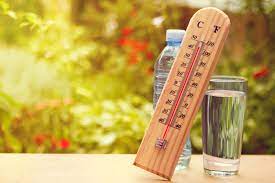Avoiding the Hidden Dangers of Moving during the Summer

Written by: Kiana Wright
Summer heat is great for beach days, but it makes moving into a new home a little more challenging. We can all agree that a nice sunny day sounds a lot better than a day with a foot of snow on the radar. However, moving in the heat of the summer can potentially be just as dangerous. A mixture of high temperatures and humidity can create unfavorable moving conditions, which makes it important to be prepared—whether you are doing it yourself or hiring a moving crew.
How Hot Is Hot?
During the months of July and August, New England often sees many days with temperatures in the mid-80’s to low-90’s. Although this weather may not seem concerning, the moisture in the air creates temperatures that can “feel” drastically higher. According to Weather.gov, “A temperature of 95-degrees and relative humidity of 50% will “feel” like 107-degrees.” (Click here for full heat index grid.)
High heat can cause a number of illnesses, including dehydration, heat exhaustion, heat cramps, sunburns, heat rash, and heat stroke. A list of common heat-related illness symptoms is available on the official CDC website in a section called “Extreme Heat”. The website also offers guidance on what to do if you or someone you are with starts to exhibit symptoms. Their recommendations include: getting into a cool/shady place, reducing body temperature with a cold shower or wet towels and calling 911 at the first sign of vomiting, disorientation or high body temperature (over 103-degrees.)
Keeping Your Cool
There are also several precautions that you can take to help prevent heat-related illness during a move, including:
- Sipping on plenty of water or sports drinks (low sodium are best)
- Taking frequent breaks in the shade or air conditioning
- Managing your exertion level – carry smaller loads or ‘team up’ on pieces that you might normally be able to carry alone
- Wearing lightweight, light-colored, and loose-fitting clothing
- Reapplying sunblock every hour
Moving into a new home can be stressful enough. Knowing the signs of heat-related illness, their prevention and treatment, can help to avoid a medical emergency that could make the day much tougher!
(And don’t forget that moving during the Summer is always a hot commodity. More homes for sale mean more moves – making May through September the busiest months of the year for Movers. So be sure to schedule an estimate and book well in advance… or wait until Fall rolls around when everything cools down and there is less to sweat about…including scheduling your move early!)


